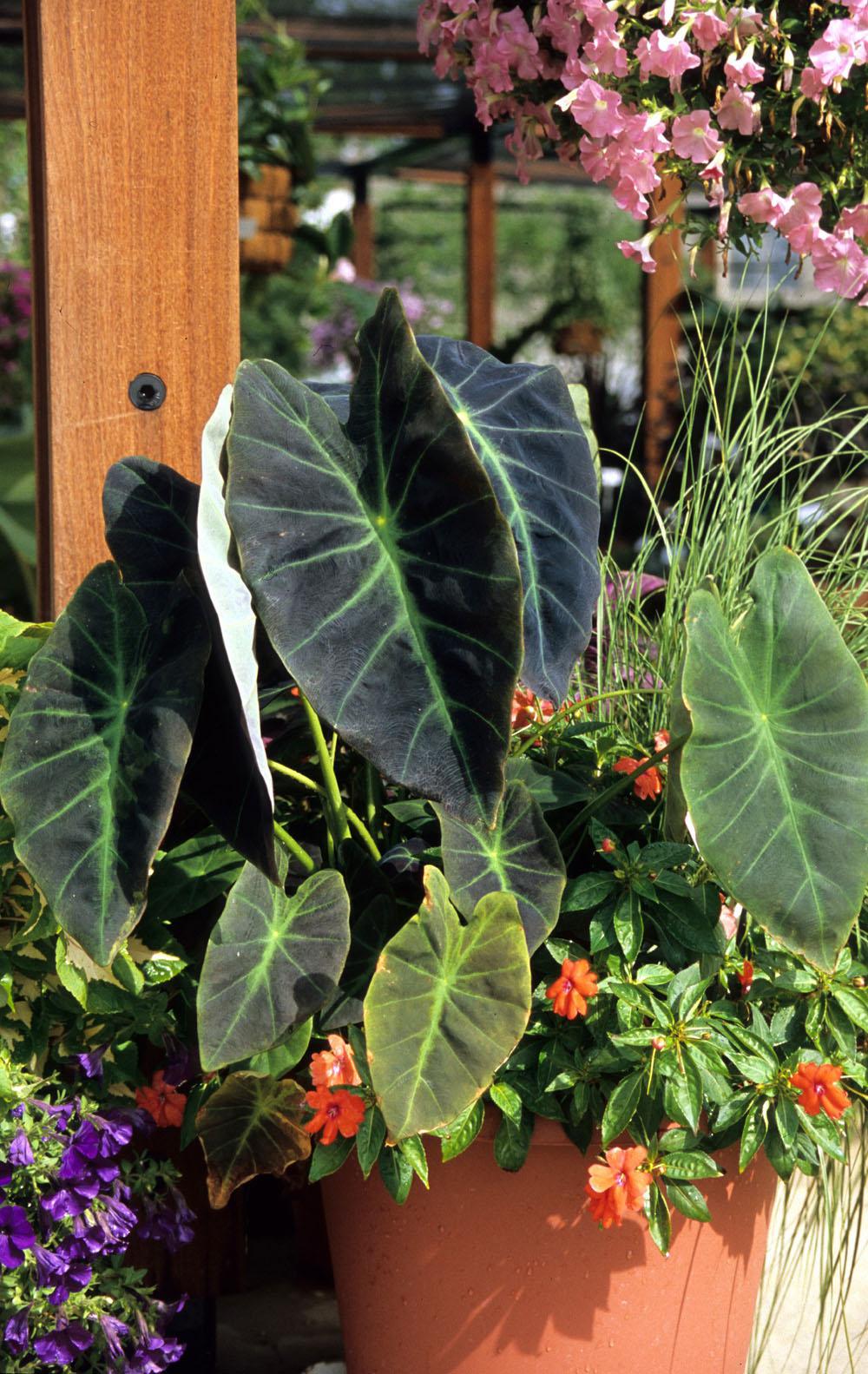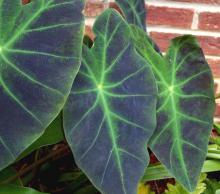Information Possibly Outdated
The information presented on this page was originally released on July 19, 2007. It may not be outdated, but please search our site for more current information. If you plan to quote or reference this information in a publication, please check with the Extension specialist or author before proceeding.
Elephant ears create a tropical paradise
By Norman Winter
MSU Horticulturist
Central Mississippi Research & Extension Center
The Imperial Taro is one of my favorite cold-hardy elephant ears for lending that lush Caribbean look to the garden. Most elephant ears are thriving this year in a summer that started off dry and now has followed with almost daily monsoons.
The Imperial Taro can be found under a couple of other names like Illustris and Antiquorum. Most catalogs refer to them scientifically as Colocasia antiquorum var. Illustris. However, the real botanical name is Colocasia esculenta.
Imperial Taro, by any name, is not a typical elephant ear. While black-leafed types have jumped in popularity, with Black Magic being the prime example, the Imperial Taro is different. The Royal Horticultural Dictionary describes it as having light-green leaves with dark-blue/black between the primary veins.
While that description may have some truth to it, most of us see a lot more dark-purple/black with lime-green veins. Obviously, this is a special elephant ear that is hard to describe. With a common name like Imperial Taro, you know it is something special.
The Imperial Taro is one of those carbohydrate/potato substitutes in the tropics, where they are boiled, baked or roasted. At the risk of sounding like my children who won't try anything new, I confess that I don't plan to eat any. But I am growing them, and you should, too. I partnered mine with gingers and cannas. They work well with all kinds of bananas and are suitable with Louisiana iris or the yellow flag iris.
The Imperial Taro is cold-hardy to zone 7a and returns faithfully if winter drainage is good. In the tropics, it thrives in moist conditions, but with our wet, cold winters, it will appreciate better drainage. In tight and heavy soil, incorporate 3 to 4 inches of organic matter for good aeration and drainage, or try planting on raised beds like the commercial landscapers do.
While preparing your bed, work in a slow-release pre-plant fertilizer like a 12-6-6 with minor nutrients. Use about 2 pounds per 100 square feet of bed space. Most gardeners buy the giant-sized bulbs, but more and more container-grown plants are being sold. Be sure to plant the bulbs so that the top of the bulb is 2 inches below the soil. If you are planting container-grown plants, set them at the same depth they are growing in the container.
Feed your elephant ears monthly with light applications of the fertilizer, and keep them well-mulched. If you have an established clump, start feeding with the emergence of new growth in the spring. These are really low-maintenance plants: just remove tattered or unattractive leaves to keep them looking their best.
If you live north of zone 7, the Imperial Taro makes a terrific annual, or the tubers can be easily dug and stored in a cool, dry, frost-free area until spring planting. Some bulbs and tubers are a strain to dig and store, but the elephant ear is among the easiest. Let them dry for a couple of days, and then remove the foliage. Place them in dry peat and store in a cool, dry place.
My mother-in-law would actually dig them, dry them and store them in heavy-duty black trash bags until time to plant. This made for even larger leaves and plants the next season.
This is a good time of the year to find bargains on the remaining elephant ears. If you do, there is no problem planting in midsummer. On the other hand, you may not be able to get any until next year. Whichever is the case, make sure to watch for Imperial Taro, also known as Illustris or Antiquorum. You'll feel like you are in Martinique.









